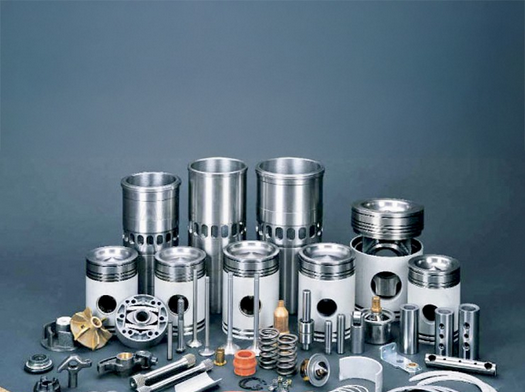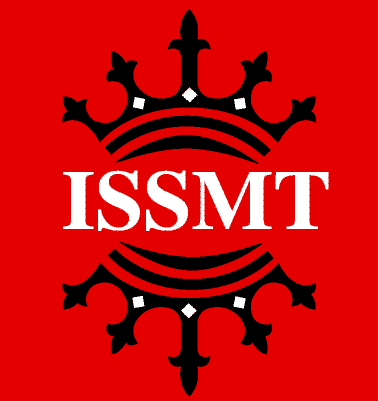
You ever fix something with a cheap part just to have it break again the next day?
Now imagine that happening on a ship.
You’re in the middle of the sea. A valve gives out. The backup you installed? Cracks wide open. It was a budget-friendly option. But now the engine room’s in chaos, the crew’s stressed, and every minute costs more money than anyone wants to admit.
This isn’t about preferences. It’s about consequences.
Cheap parts fail. Good parts don’t.
At ISSMT, we’ve seen how this plays out. We’ve helped ships bounce back after disasters caused by knock-off components. And we’ve kept vessels sailing smoothly by supplying parts that do their job, quietly and reliably.
If you’re responsible for a ship’s safety and performance, this post is going to walk you through why quality in marine spare parts isn’t negotiable.
What Are Marine Spare Parts?
Marine spare parts are the components that keep a ship running.
They include:
- Engine components (pistons, valves, fuel pumps)
- Electrical parts (switchboards, sensors, relays)
- Hydraulic systems (hoses, seals, actuators)
- Safety systems (alarms, extinguishers)
- Navigation aids (GPS units, radars)
Some are small. Some cost thousands of dollars. But every single one has a job to do.
And if one fails? The whole vessel could be affected.
What Happens When You Choose Cheap Parts?
Frequent Breakdowns
Low-cost parts often come from unverified sources. They’re usually built with subpar materials.
That means:
- Seals that leak after one trip
- Bearings that heat up fast
- Valves that rust within weeks
You end up replacing the same part again and again. The savings? Gone.
Safety Hazards
Bad parts can lead to more than downtime. They cause accidents.
Imagine a fire suppression system with a defective pressure gauge. Or a navigation light that fails in stormy weather.
It’s not just risky. It’s dangerous.
Regulatory Trouble
The IMO and class societies require ships to meet specific standards. Using uncertified or fake parts can fail inspections.
That means:
- Port delays
- Fines
- Detention orders
And fixing those problems at a foreign port? That’s not cheap.
Hidden Costs
You thought you saved 20%? But factor in:
- Labor to replace the part twice
- Time lost due to delay
- Potential cargo claims
The real cost of that cheap valve is much higher than the price tag.
Why Quality Spare Parts Are Worth It
Longer Lifespan
High-quality parts are built to perform under extreme conditions.
Salt, pressure, vibration, heat — they handle it all. They don’t quit halfway through a voyage.
Certified and Traceable
Good parts come with paperwork. You know who made them. You know they meet ISO or class standards.
At ISSMT, we only supply genuine or OEM-equivalent parts with traceable documentation.
Peace of Mind
When you install a good part, you sleep better. You know it’s going to hold.
That confidence matters when you’re 800 miles from shore.
How to Identify Good Marine Spare Parts
Check the Source
Ask where the part is coming from. Is it from the original manufacturer? Is it approved by class?
We once saw a ship that bought parts labeled “Made in Germany.” We traced them to a warehouse in China.
Always verify the source.
Review the Documentation
Genuine parts should include:
- Manufacturer’s name
- Serial number
- Material specification
- Compliance certificate
No docs? Big red flag.
Compare the Build
Hold a fake and a real part side by side. Chances are:
- One feels lighter
- The finish is rougher
- Threads aren’t clean
It might look fine. But it won’t perform.
Ask About Warranty
Good parts come with guarantees. Vague answers or no warranty? Walk away.
The ISSMT Quality Standard
We don’t gamble with quality.
We know which vendors supply the real deal. We test high-demand items before delivery. And we don’t accept parts that fail our own inspections.
Whether it’s a $30 oil filter or a $3000 compressor, our team treats it like mission-critical equipment.
Because it is.
Our clients come back because our parts don’t.
What Our Clients Say
“We used to get parts from three different suppliers. After ISSMT started handling our orders, breakdowns dropped. So did our stress.” — Chief Engineer, Bulk Carrier
“Your team helped us replace a failed valve 8 hours before departure. And the new one lasted three months longer than expected.” — Port Captain, Tanker Fleet
FAQs
1. Are OEM parts always better than aftermarket?
Not always. Some aftermarket parts meet or exceed OEM standards. What matters is certification and source.
2. How do I avoid counterfeit parts?
Buy from trusted chandlers. Ask for documentation. Inspect packaging and part numbers.
3. Are class-certified parts mandatory?
For certain systems, yes. Fire, engine, and safety parts often require certified components.
4. Do you supply parts for older ships?
Yes. We can source or fabricate replacements for legacy systems.
5. Can you deliver parts urgently to Chittagong Anchorage?
Yes. We’ve delivered under 6 hours in emergencies.
6. What if a part fails after installation?
We offer replacement guarantees for verified failures under warranty.
7. Can you help us source rare or discontinued parts?
Yes. We have a global vendor network and can often find rare components.
Final Thoughts
Not all marine spare parts are equal.
And when you’re out at sea, shortcuts can get expensive, fast.
High-quality parts save time, money, and stress. They reduce risk. They keep crews safe.
At ISSMT, we don’t sell parts just to close a sale. We provide solutions that work under pressure.
Next time your ship needs a spare, ask yourself:
Do you want it cheap? Or do you want it to last?
Because out there, there’s no room for second chances.
Visit issmt.net to speak with someone who knows what quality really means.
“Quality means doing it right when no one is looking.” — Henry Ford
We couldn’t have said it better.

